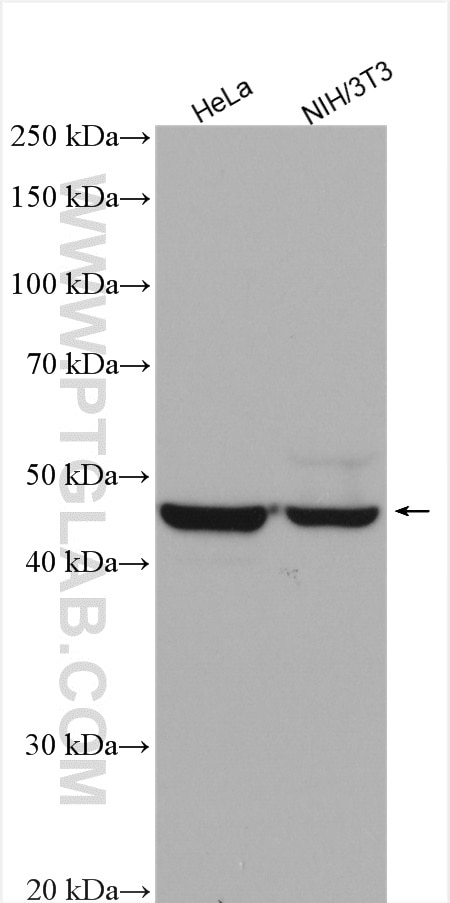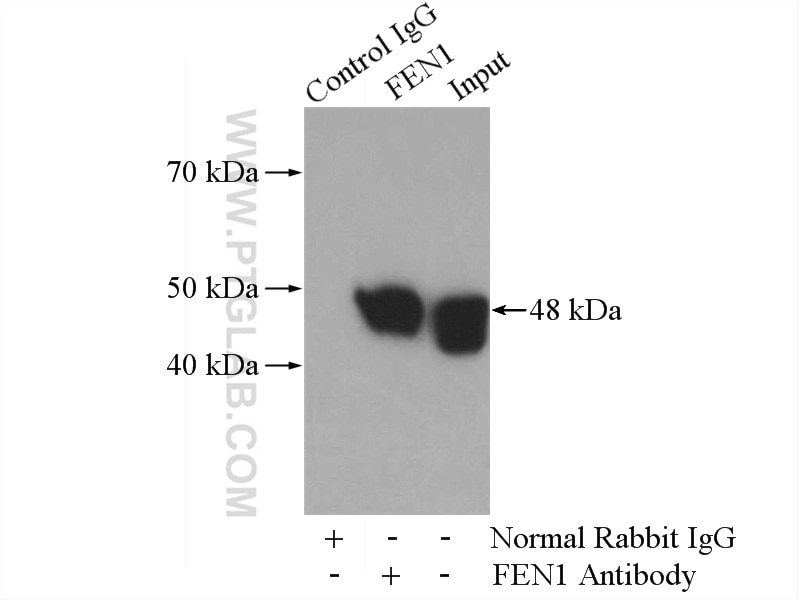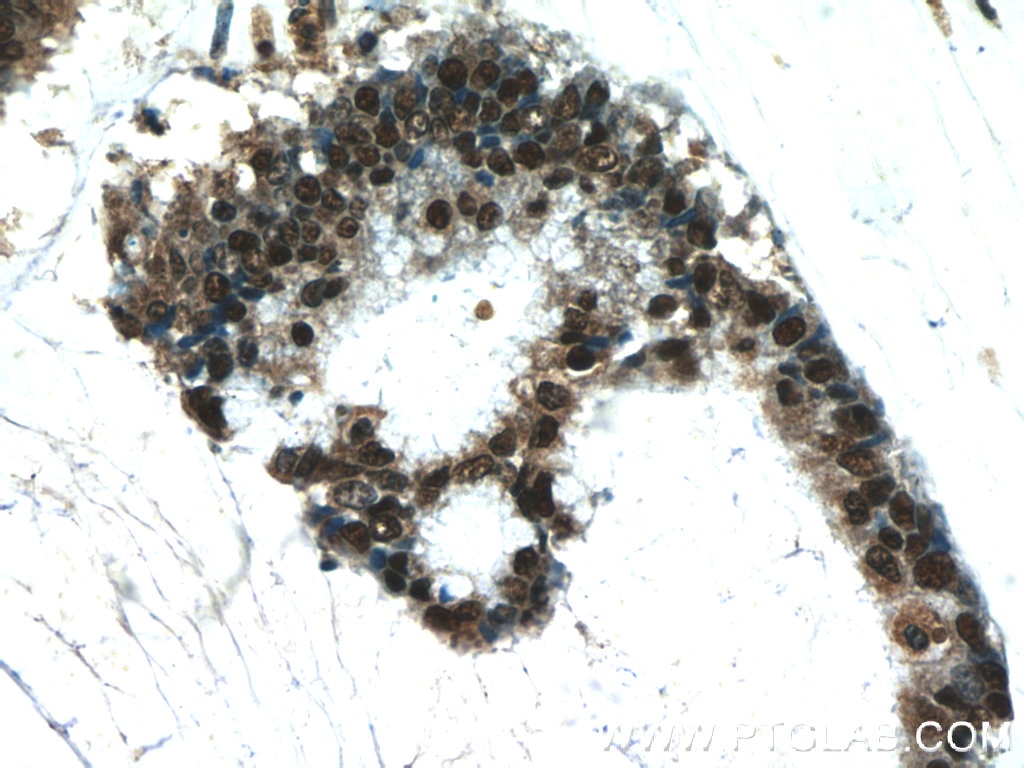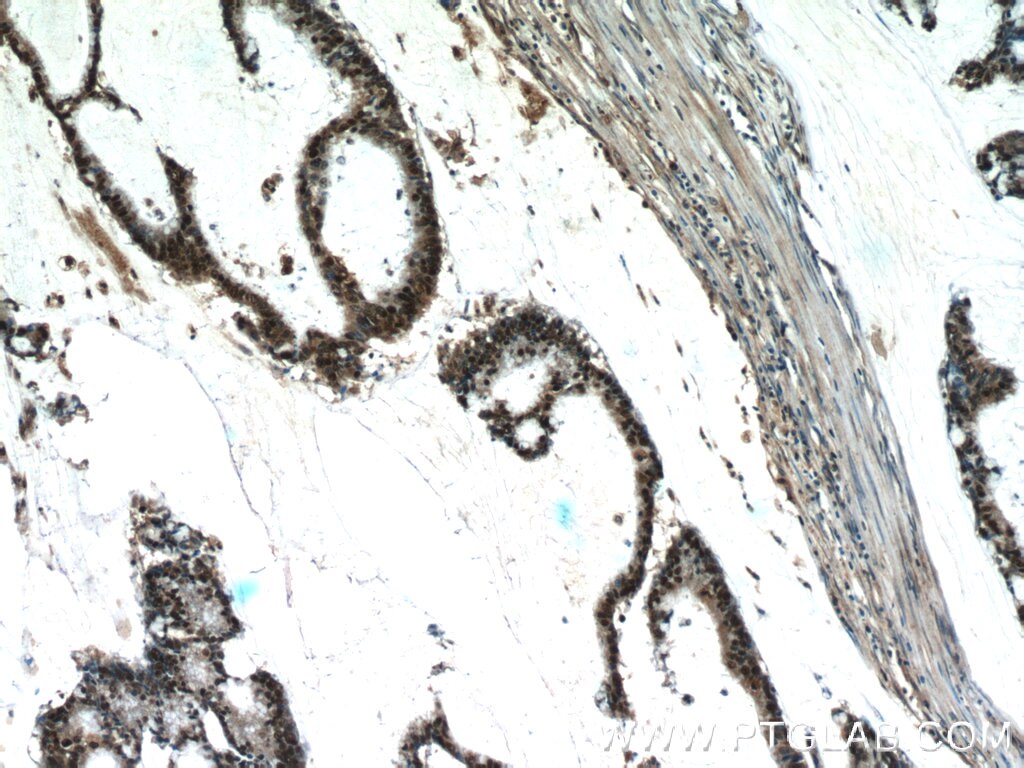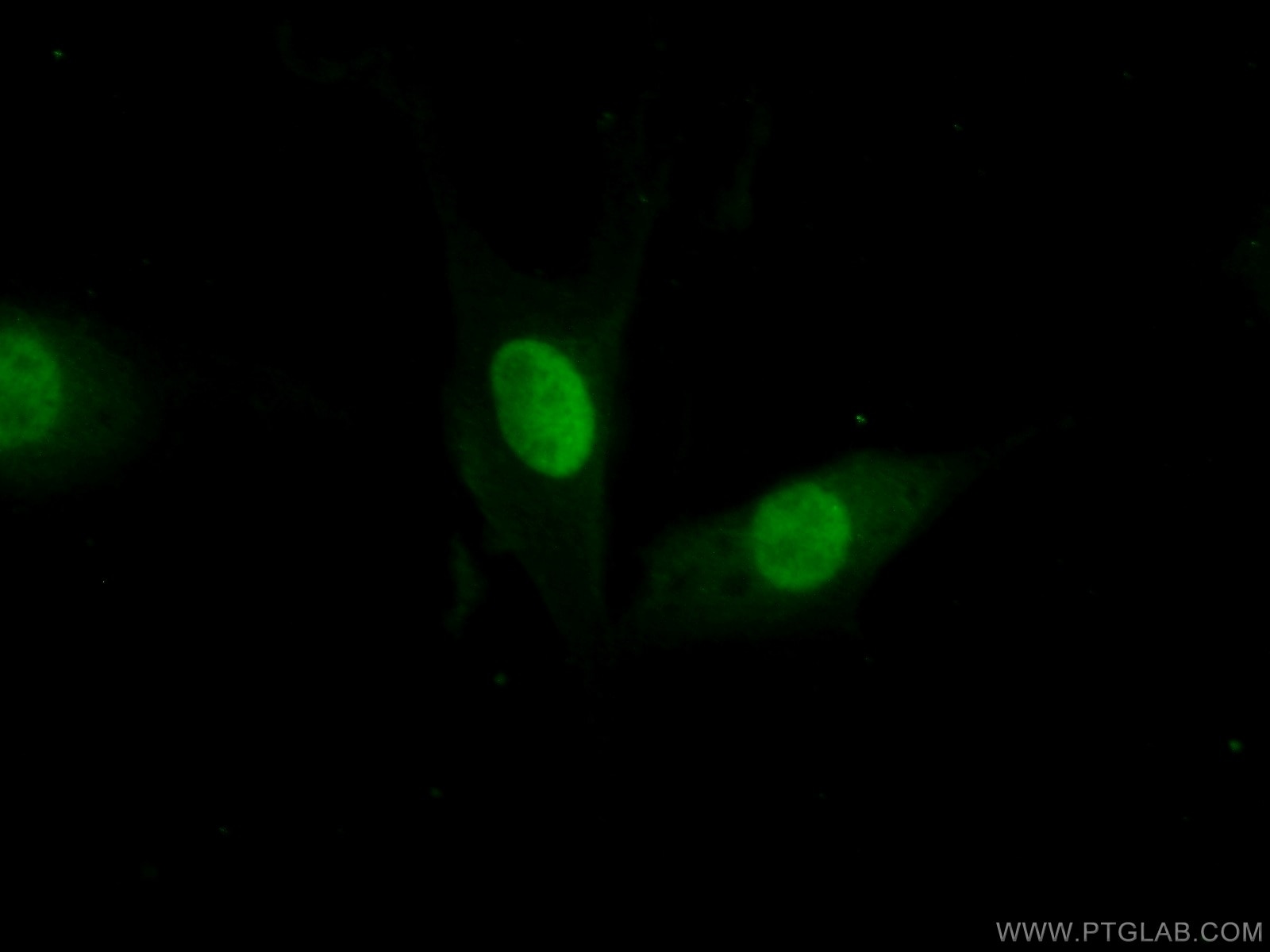Anticorps Polyclonal de lapin anti-FEN1
FEN1 Polyclonal Antibody for WB, IP, IF, IHC, ELISA
Hôte / Isotype
Lapin / IgG
Réactivité testée
Humain, souris et plus (1)
Applications
WB, IHC, IF/ICC, IP, ELISA
Conjugaison
Non conjugué
N° de cat : 14768-1-AP
Synonymes
Galerie de données de validation
Applications testées
| Résultats positifs en WB | cellules HeLa, cellules NIH/3T3 |
| Résultats positifs en IP | cellules NIH/3T3 |
| Résultats positifs en IHC | tissu de cancer du côlon humain il est suggéré de démasquer l'antigène avec un tampon de TE buffer pH 9.0; (*) À défaut, 'le démasquage de l'antigène peut être 'effectué avec un tampon citrate pH 6,0. |
| Résultats positifs en IF/ICC | cellules NIH/3T3 |
Dilution recommandée
| Application | Dilution |
|---|---|
| Western Blot (WB) | WB : 1:1000-1:4000 |
| Immunoprécipitation (IP) | IP : 0.5-4.0 ug for 1.0-3.0 mg of total protein lysate |
| Immunohistochimie (IHC) | IHC : 1:20-1:200 |
| Immunofluorescence (IF)/ICC | IF/ICC : 1:50-1:500 |
| It is recommended that this reagent should be titrated in each testing system to obtain optimal results. | |
| Sample-dependent, check data in validation data gallery | |
Applications publiées
| WB | See 9 publications below |
| IHC | See 1 publications below |
| IF | See 1 publications below |
Informations sur le produit
14768-1-AP cible FEN1 dans les applications de WB, IHC, IF/ICC, IP, ELISA et montre une réactivité avec des échantillons Humain, souris
| Réactivité | Humain, souris |
| Réactivité citée | rat, Humain, souris |
| Hôte / Isotype | Lapin / IgG |
| Clonalité | Polyclonal |
| Type | Anticorps |
| Immunogène | FEN1 Protéine recombinante Ag6552 |
| Nom complet | flap structure-specific endonuclease 1 |
| Masse moléculaire calculée | 43 kDa |
| Poids moléculaire observé | 48 kDa |
| Numéro d’acquisition GenBank | BC000323 |
| Symbole du gène | FEN1 |
| Identification du gène (NCBI) | 2237 |
| Conjugaison | Non conjugué |
| Forme | Liquide |
| Méthode de purification | Purification par affinité contre l'antigène |
| Tampon de stockage | PBS avec azoture de sodium à 0,02 % et glycérol à 50 % pH 7,3 |
| Conditions de stockage | Stocker à -20°C. Stable pendant un an après l'expédition. L'aliquotage n'est pas nécessaire pour le stockage à -20oC Les 20ul contiennent 0,1% de BSA. |
Informations générales
FEN1(Flap endonuclease-1) is the prototypical member of the 5'-nuclease superfamily, whose activities span a range of cellular pathways involved in DNA replication and genome maintenance (PMID: 22118811, 21496641, 20929870). FEN1 is a structure-selective metallonuclease essential for Okazaki fragment maturation through efficient removal of 5' flaps resulting from strand displacement during lagging-strand synthesis (PMID: 8144677, 9081985). FEN1 is overexpressed in multiple cancer types, and has been suggested both as a biomarker relating to prognosis and disease progression and as a potential therapeutic target (PMID: 19010819, 16879693, 19596913, 27526030).
Protocole
| Product Specific Protocols | |
|---|---|
| WB protocol for FEN1 antibody 14768-1-AP | Download protocol |
| IHC protocol for FEN1 antibody 14768-1-AP | Download protocol |
| IF protocol for FEN1 antibody 14768-1-AP | Download protocol |
| IP protocol for FEN1 antibody 14768-1-AP | Download protocol |
| Standard Protocols | |
|---|---|
| Click here to view our Standard Protocols |
Publications
| Species | Application | Title |
|---|---|---|
Nat Commun Cis- and trans-resveratrol have opposite effects on histone serine-ADP-ribosylation and tyrosine induced neurodegeneration. | ||
J Med Chem CJ2: A Novel Potent Platinum(IV) Prodrug Enhances Chemo-Immunotherapy by Facilitating PD-L1 Degradation in the Cytoplasm and Cytomembrane | ||
J Mol Cell Biol SUMO-1 modification of FEN1 facilitates its interaction with Rad9-Rad1-Hus1 to counteract DNA replication stress. | ||
Biology (Basel) In Situ Peroxidase Labeling Followed by Mass-Spectrometry Reveals TIA1 Interactome. | ||
Am J Physiol Cell Physiol Succinylation at a key residue of FEN1 is involved in the DNA damage response to maintain genome stability. | ||
Dis Markers Upregulation of FEN1 Is Associated with the Tumor Progression and Prognosis of Hepatocellular Carcinoma. |
